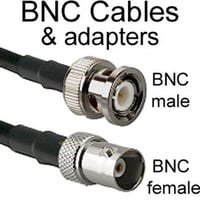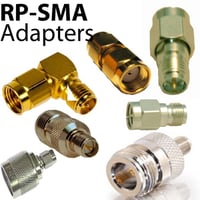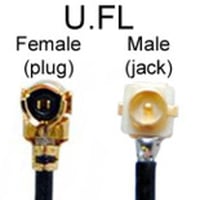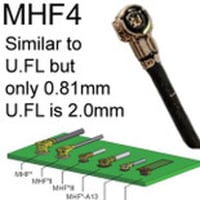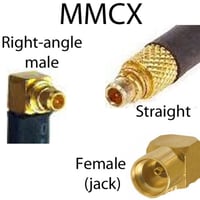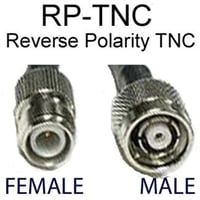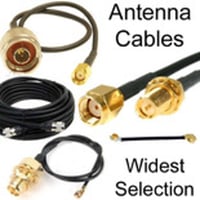BNC Cables & Adapters for Wireless
Cables with BNC connectors for Wireless Applications: 50 Ohm
- Antenna cables and adapters with BNC connectors, for wireless applications, are 50 Ohm.
- BNC cables and adapters for CCTV, security cameras and audio applications are 75 Ohm: Please see this subcategory for BNC adapters and cables for video and audio applications.
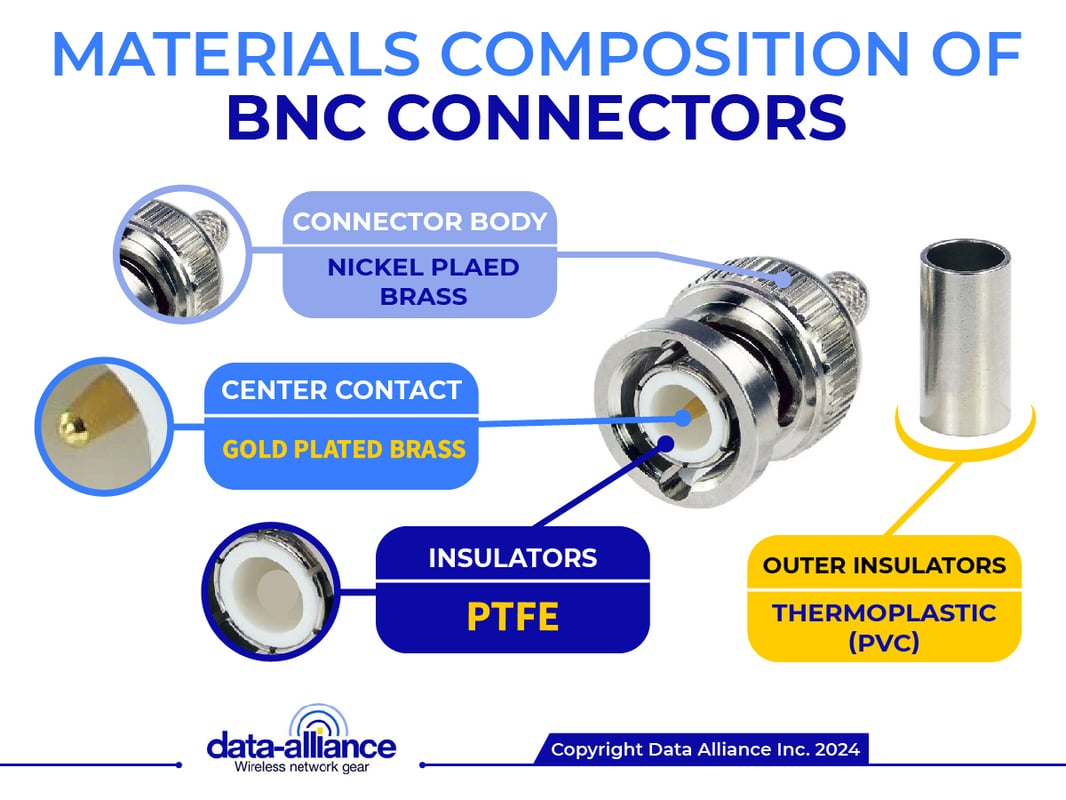
Wireless Applications of BNC Connectors, Cables, and Adapters
BNC connectors, an abbreviation for Bayonet Neill-Concelman connectors, are a type of coaxial RF connector widely used in radio and telecommunications applications. They are known for their quick and secure connection mechanism, which makes them highly reliable and suitable for various purposes. This article focuses on the wireless applications of BNC connectors, cables, and adapters, specifically in antenna cables and HAM radio applications. The second section of the article, below, focuses on BNC connectors applications in the Internet of Things (IoT).
Antenna Cables with BNC Connectors
BNC connectors are commonly used in antenna cables for a variety of wireless devices and applications. Their secure connection and wide frequency range make them ideal for connecting antennas to transmitters and receivers in various communication systems. Some of the wireless applications where BNC connectors are used in antenna cables include:
-
HAM radio: BNC connectors are popular among amateur radio operators for connecting antennas to handheld and mobile transceivers. Their durability and ease of use make them an excellent choice for HAM radio enthusiasts who need a reliable connection in various operating conditions.
-
Wireless microphones: BNC connectors can be found on some wireless microphone systems, where they are used to connect the antennas to the receivers. The secure connection provided by BNC connectors ensures minimal signal loss and interference, which is critical for maintaining audio quality in live performances and broadcasts.
-
Wireless video transmission: BNC connectors are also used in wireless video transmission systems, connecting antennas to devices such as wireless cameras and video receivers. The high-frequency capabilities of BNC connectors make them well-suited for transmitting high-definition video signals over the air.
Frequency Limit: BNC connectors are generally suitable for applications up to 4 GHz. For ultra-high-frequency wireless applications, other connector types, such as SMA or N-type, might be more appropriate.
Impedance Requirements for Wireless Applications
BNC connectors come in two primary impedance ratings: 50 Ohm and 75 Ohm. The choice of impedance depends on the specific wireless application and the type of cable being used. Here's a brief overview of which impedance is required for various wireless applications:
-
50 Ohm: This impedance is most commonly used in radio frequency (RF) applications, such as HAM radio, wireless microphones, and wireless video transmission. The 50 Ohm impedance is designed to minimize signal loss and maximize power transfer, making it ideal for these types of wireless communication systems.
-
75 Ohm: The 75 Ohm impedance is typically used for video and data transmission applications, such as cable television and broadband internet. While it is less common in wireless applications, some wireless video systems may use 75 Ohm BNC connectors and cables to match the impedance of the video equipment being used.
BNC connectors, cables, and adapters play a vital role in various wireless applications, including HAM radio, wireless microphones, and wireless video transmission systems. Their secure connection, wide frequency range, and impedance options make them a reliable choice for ensuring consistent performance in these demanding environments.
BNC Connectors and Cables in IoT (Internet of Things) Applications
BNC (Bayonet Neill-Concelman) cables find application in various aspects of IoT (Internet of Things) due to their unique characteristics, including durability, ease of use, and high-frequency capabilities. Here are some common IoT applications where BNC cables are used:
-
Security and Surveillance Systems: BNC cables are often used to connect cameras and sensors in security and surveillance systems. They are ideal for transmitting high-quality video signals over long distances without signal degradation, making them essential for IoT-based security solutions.
-
Industrial Automation: In industrial IoT applications, where sensors and controllers communicate data in real-time, BNC cables are employed to ensure reliable and low-latency connections. They are commonly used to connect sensors measuring variables like temperature, pressure, and flow rate.
-
Environmental Monitoring: IoT devices used for environmental monitoring, such as weather stations and air quality sensors, frequently use BNC connectors and cables. These cables ensure the accurate transmission of data from sensors to data collection and processing systems.
-
Laboratory and Scientific Instruments: In research and laboratory settings, precision and reliability are critical. BNC cables are often used to connect scientific instruments like oscilloscopes, signal generators, and spectrum analyzers to data acquisition systems in IoT applications for data analysis and research.
-
Wireless Sensor Networks (WSNs): BNC connectors and cables can be used in conjunction with wireless sensor nodes to provide both power and data connectivity. This is especially valuable in scenarios where sensors need to be deployed in remote or challenging environments.
-
Smart Agriculture: Agriculture IoT relies on sensors and actuators to monitor and manage crops, livestock, and irrigation systems. BNC cables help connect various sensors and actuators that measure soil moisture, temperature, humidity, and other agricultural parameters.
-
Remote Monitoring and Telemetry: In remote monitoring and telemetry applications, such as in oil and gas industries or remote infrastructure management, BNC cables ensure the reliable transmission of data over long distances. This is crucial for maintaining and monitoring critical infrastructure.
-
Aerospace and Defense: BNC connectors are used in aviation and defense applications due to their ruggedness and ability to withstand extreme conditions. They are employed in IoT systems used for communication, radar systems, and avionics.
-
RFID Systems: BNC connectors can be used in IoT-based RFID (Radio-Frequency Identification) systems for tracking and monitoring assets, inventory, and equipment. They facilitate the connection between RFID readers and antennas.
-
Telecommunications: In IoT applications related to telecommunications, BNC cables are sometimes used to connect specialized devices or components, such as RF transmitters and receivers.
In summary, BNC cables and connectors are versatile components in IoT applications, ensuring reliable data transmission and connectivity in various scenarios. Their adaptability, durability, and ability to handle high-frequency signals make them suitable for a wide range of applications where precision and dependability are paramount.

